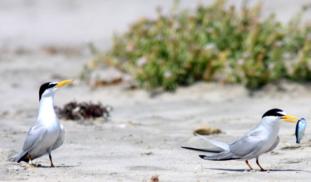Please wait...
About This Project
Wintering habitats of California least terns remain unknown, despite having terns being listed as endangered since 1970. Scientists believe that they migrate to Mexico, Central America, and perhaps as far as South America! Using novel GPS tags, our research will help unravel their unknown distribution, determine where these terns are wintering, and their migration routes. Having this knowledge will mean huge gains for the long-term management and future recovery of this endangered seabird.

Browse Other Projects on Experiment
Related Projects
How do polar bears stay healthy on the world's worst diet?
Polar bears survive almost entirely on seal fat. Yet unlike humans who eat high-fat diets, polar bears never...
Uncovering hidden insect diversity associated with a likely undescribed gall-forming midge
Does a likely undescribed species of gall-forming midge (pers. comm. Ray Gagné) on Eriodictyon plants (Yerba...
Macrofungi of the California archipelago
The eight islands of the California Archipelago are a well-studied biodiversity hotspot — but we know almost...




